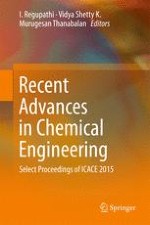2016 | OriginalPaper | Buchkapitel
Simulation of Hydroperoxide Process for the Production of Propylene Oxide
verfasst von : V. Vaishali, P. R. Naren
Erschienen in: Recent Advances in Chemical Engineering
Verlag: Springer Singapore
Aktivieren Sie unsere intelligente Suche, um passende Fachinhalte oder Patente zu finden.
Wählen Sie Textabschnitte aus um mit Künstlicher Intelligenz passenden Patente zu finden. powered by
Markieren Sie Textabschnitte, um KI-gestützt weitere passende Inhalte zu finden. powered by
